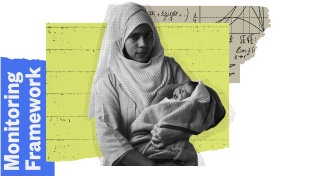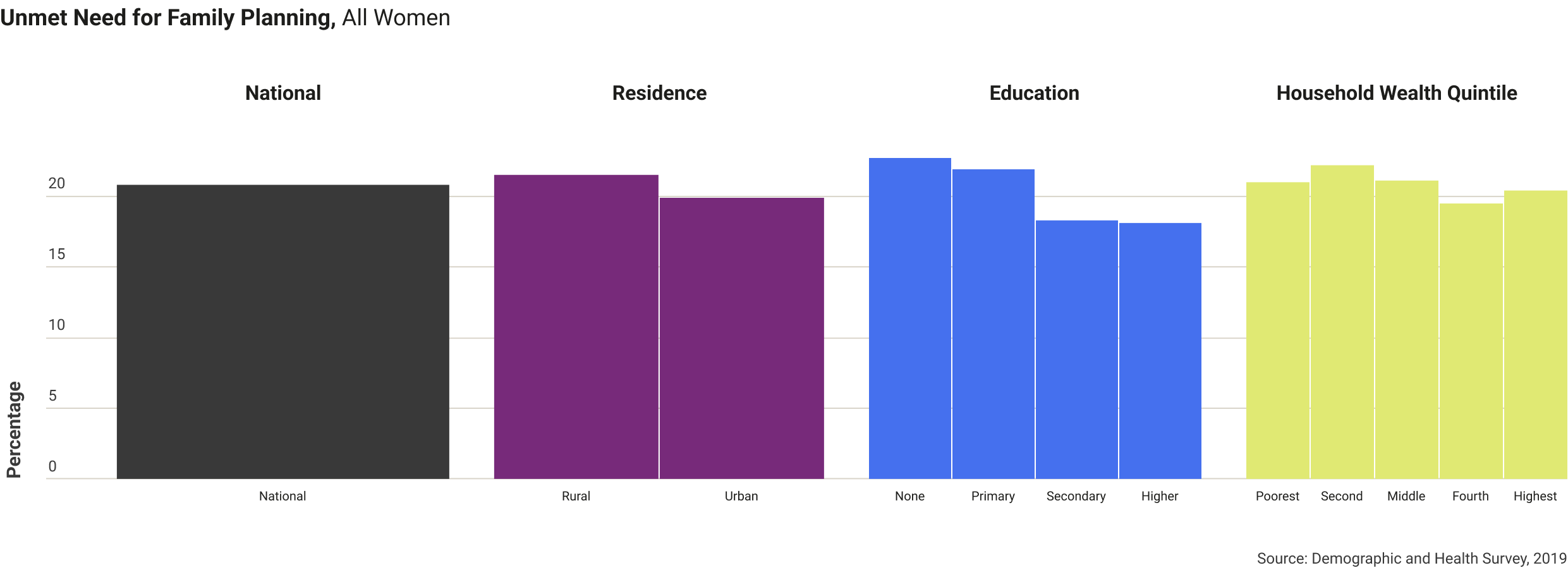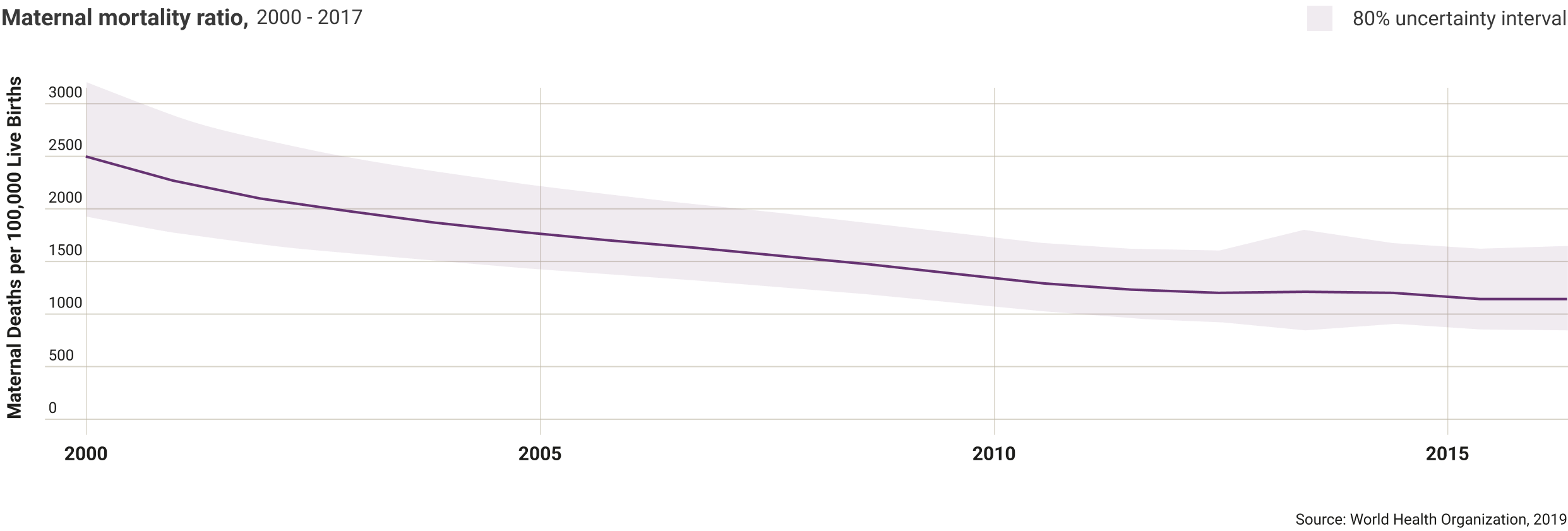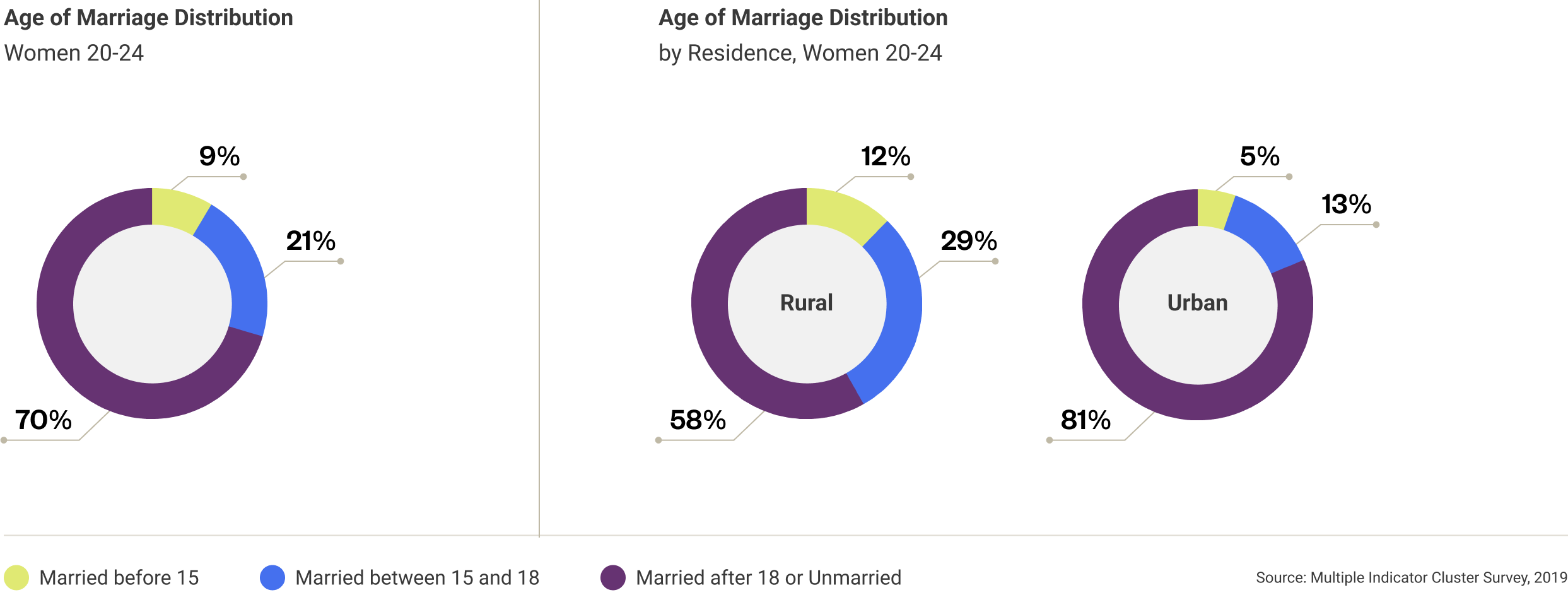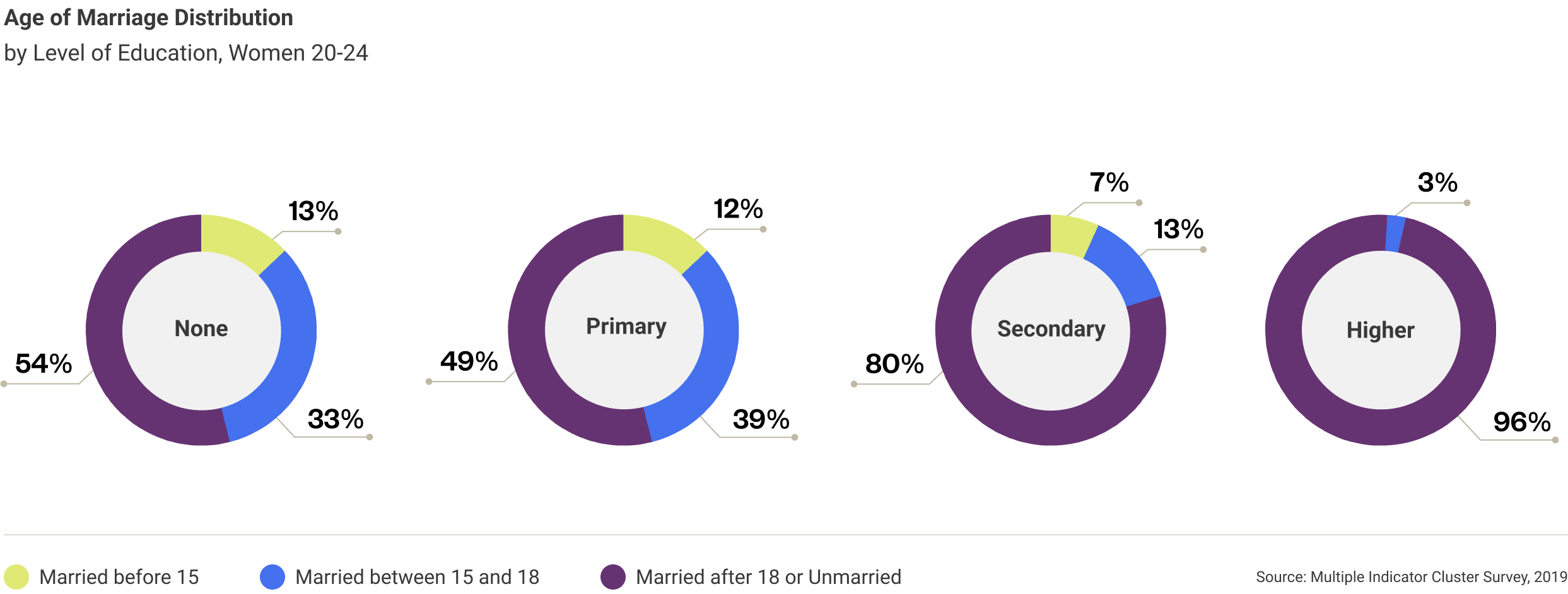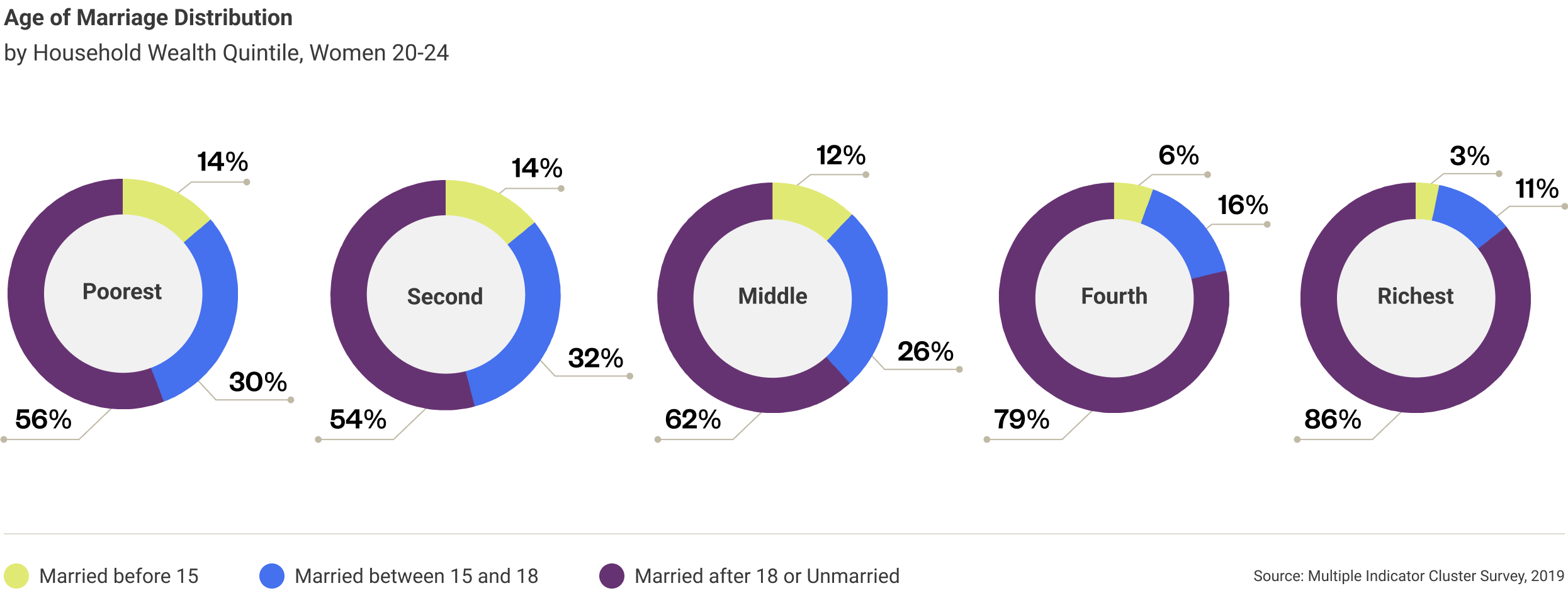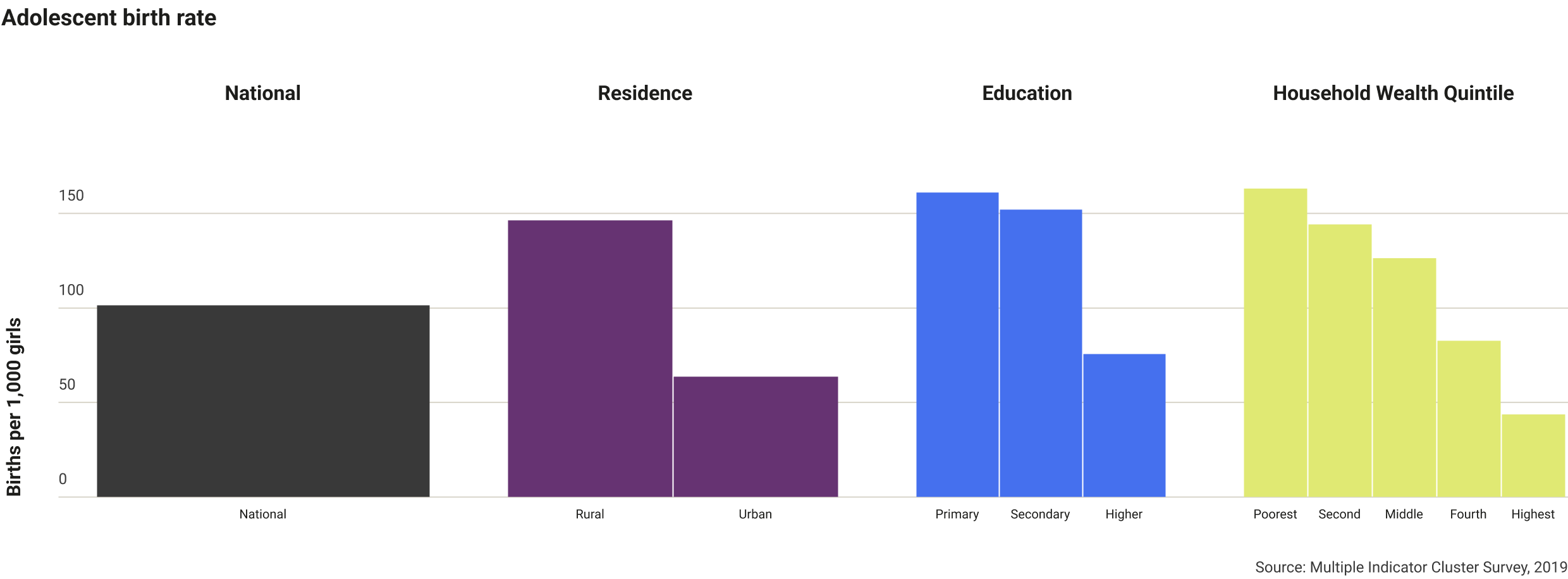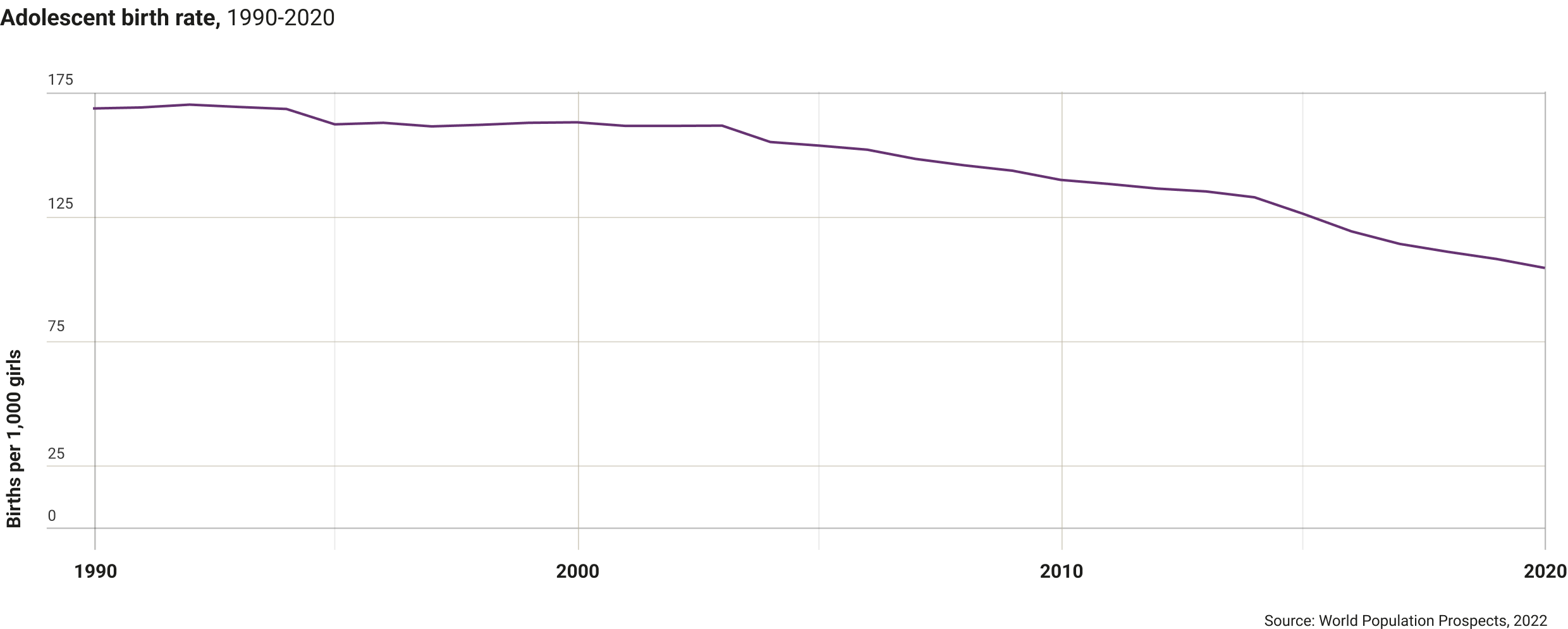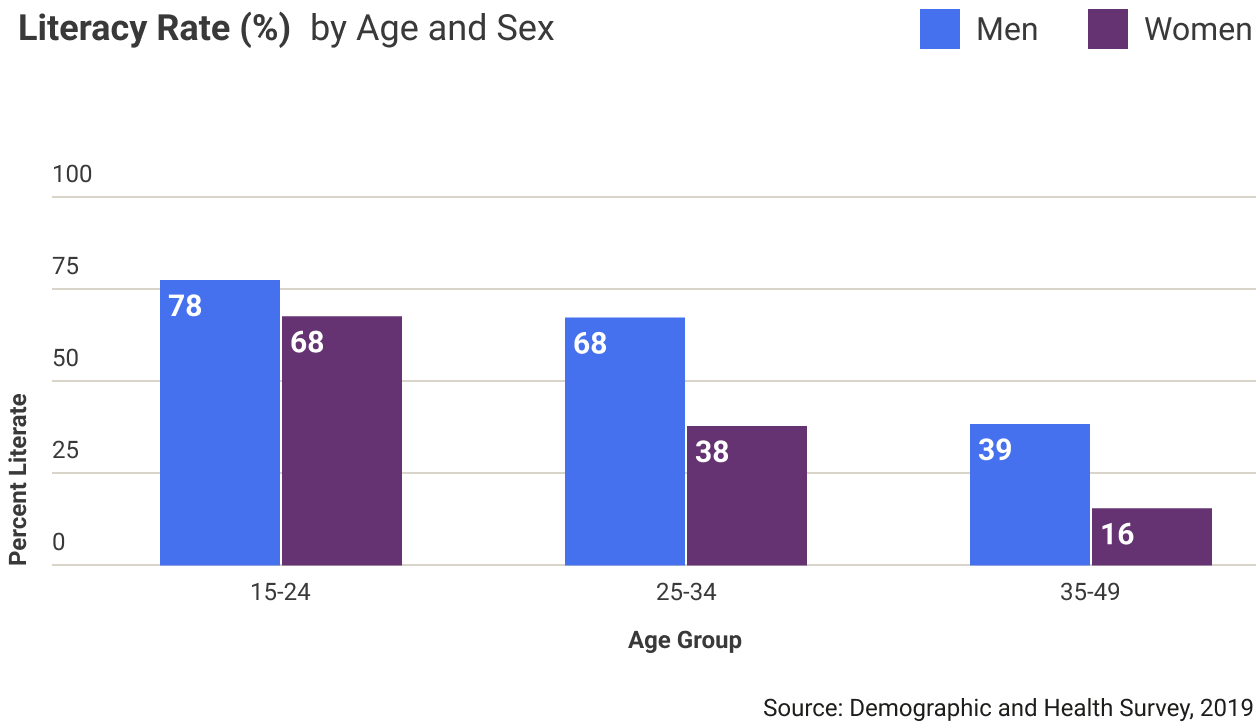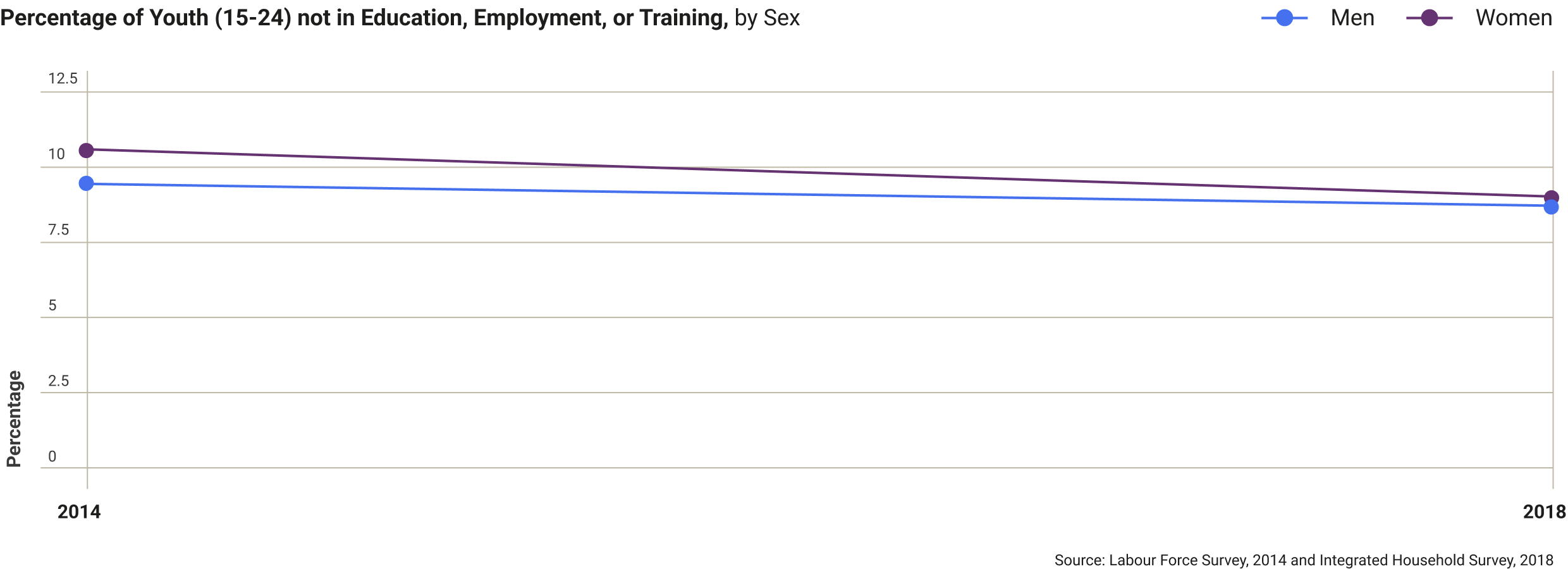
 8,697,890
Total Population
8,697,890
Total Population
A dispute exists between the Governments of Argentina and the United Kingdom of Great Britain and Northern Ireland concerning sovereignty over the Falkland Islands (Malvinas).
The boundaries and names shown and the designations used on this map do not imply official endorsement or acceptance by the United Nations.
Sierra Leone’s Population dynamics Data


Total Fertility Rate (births per woman)
Adolescent (15-19 years) Birth Rate (births per 1,000 girls)
Maternal Mortality Ratio (Per 100,000 live births)
Sierra Leone’s national commitment
At the Nairobi Summit the Government of the Republic of Sierra Leone committed to the overall goal of the ICPD Programme of Action, in line with the national commitments in the Sierra Leone Medium Term National Development Plan (2018 – 2023), the national population policy (2018), and the 2017 Family Planning 2020 commitments.
The Government of Sierra Leone has committed to the overall goal of zero unmet need for family planning services by 2030. As part of this commitment, Sierra Leone is working to raise the contraceptive prevalence rate from 22.5% in 2017 to 50% by 2028.
In 2022, Sierra Leone’s total fertility rate (TFR) – the number of children that would be born to a woman if she were to live to the end of her childbearing years – is estimated to be 3.88.
Unmet need for family planning is slightly higher in rural areas than in urban areas, and is highest among women with no education and primary education.
Sierra Leone’s national commitment
The Government of Sierra Leone has committed to the overall goal of zero preventable maternal deaths by 2030.
Sierra Leone’s maternal mortality ratio declined from 2000 to 2017
and recent survey estimates from the Demographic and Health Survey, 2019 indicate that the rate is 717 deaths per 100,000 live births.
86.9% of deliveries among married women 15-49 years who had a live birth in the last two years in Sierra Leone were assisted by a skilled attendant.
This percentage is one of the highest in the region. The percentage of deliveries assisted by a skilled attendant was higher among women who live in urban areas, and increased with a woman’s education level and with household income. Most births in Sierra Leone are attended by nurse midwives; in the wealthiest households, approximately 14% of births are attended by doctors (compared with 80% attended by nurse midwives).
In Sierra Leone, 29.6% of women aged 20-24 years were married before age 18, with almost 9% of women married before age 15.
Marriage before age 18 is two times higher among women living in rural areas compared to women living in urban areas. It is higher among women with no education and only primary education, and is four times higher among those living in the poorest households compared to those living in the wealthiest households.
Sierra Leone’s adolescent birth rate has been decreasing from 1990 to 2020 and is currently slightly over 100 births per 1,000 girls.
The adolescent birth rate is two times higher among women living in rural areas of the country compared with those living in urban areas, two times higher among those with no education compared with those with secondary education, and three times higher among those living in the poorest households compared to those living in the wealthiest households.
More than 90% of women over 30 in Sierra Leone have undergone female genital cutting, compared to 61% of those ages 15-19. Sierra Leone is one of a few countries in Sub-Saharan Africa that have not banned female genital mutilation.
The literacy rate in Sierra Leone among men is higher than that for women. Both rates decrease by age group from 15-24 years old to 35-49 years old.
In 2018, Sierra Leone’s secondary school net attendance ratio is 41.8. The 2020 decision by the Government of Sierra Leone end a 10-year ban against pregnant girls and teenage mothers attending school is an important step to improve education for girls in the country, in line with their human rights and in support of advancing gender equality and the Nairobi commitments.


